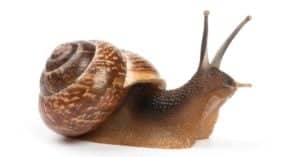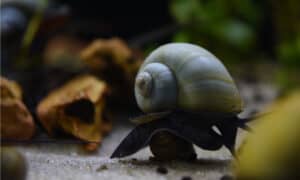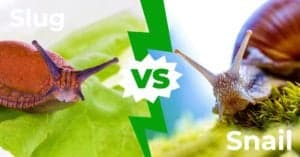Snails are some of the most common yet most mysterious animals that we can find in our backyards. They are one of those animals that are difficult to classify. But are snails really insects or bugs? Thankfully, science has some answers for us to help identify and classify this awesome animal. Let’s learn: Is A Snail an Insect, Bug, or Something Else?
Is A Snail an Insect, Bug, or Something Else?
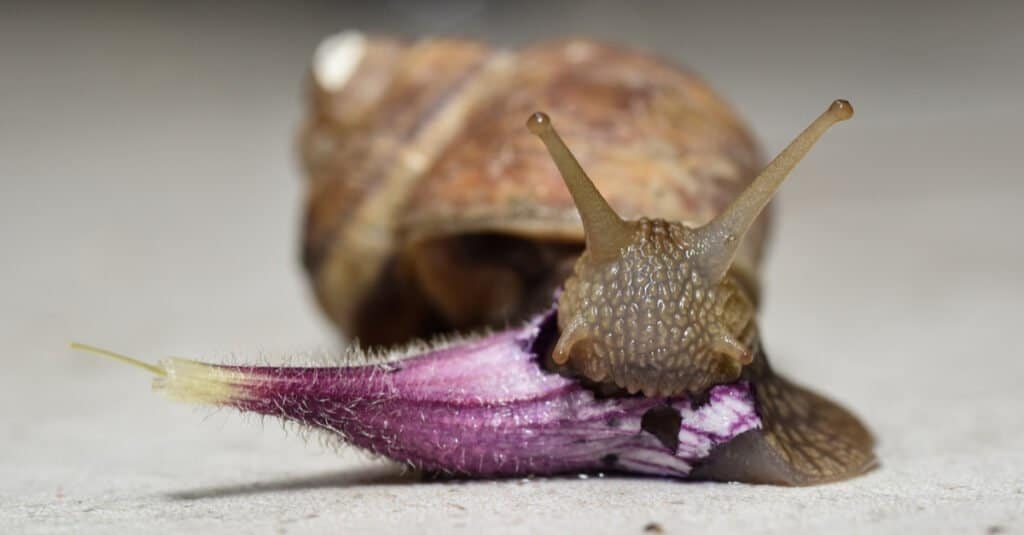
Snails are shelled gastropods, not insects.
©microcosmos/Shutterstock.com
Snails are shelled creatures that belong to the gastropod class. Still, that doesn’t necessarily answer the question! Snails are not bugs or insects, even though they share some of the same traits and behaviors.
Understanding the reasoning behind this requires a dive into taxonomical classification. As fancy as it sounds, it’s simply the scientific term for “the science of naming and grouping living things.” Snails are gastropods that can live on land or in aquatic environments. Gastropods are a group of invertebrates (animals that don’t have spines) that are separated into two groups: slugs and snails. All slugs and snails are considered gastropods, no matter where they are found.
Zooming out, all gastropods belong in the “Mollusca” order. Mollusks are the second most numerous phylum of invertebrates, with over 85,000 species currently alive. Most mollusks share some similar traits, with one of the primary ones being that they have soft, unsegmented bodies. Other mollusks include octopus, squid, and clams.
What is an insect?
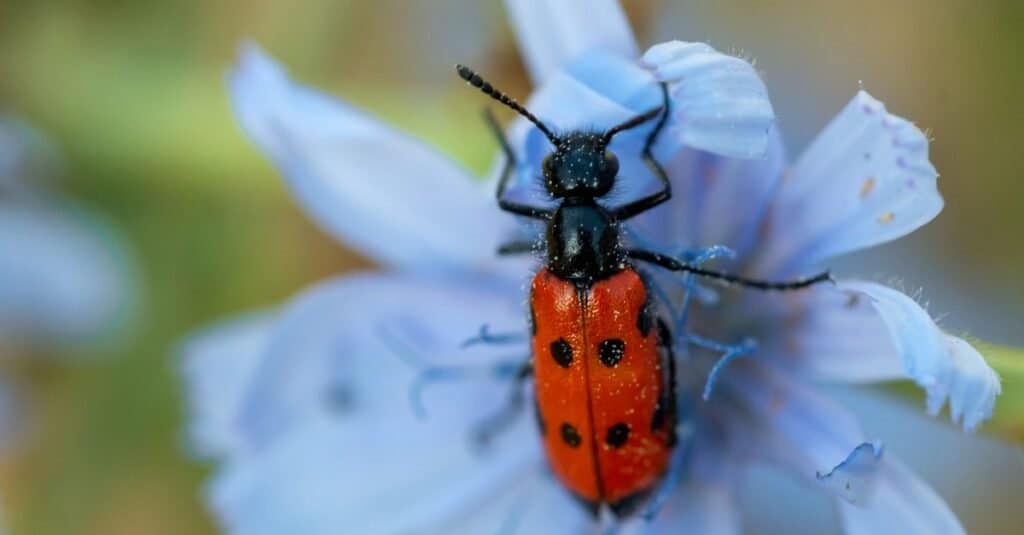
Insects are in a separate group of animals that belong to the arthropod phylum.
©iStock.com/Irina Chayko
Speaking in terms of taxonomical classification, insects are invertebrates that belong to the class Insecta. They are the largest group (by number of species) of the arthropod phylum. Almost all insects live on land since the prevailing group in the ocean is crustaceans. What that means is that when you eat shrimp, crab, and lobster, you are actually eating the ocean equivalent of insects!
Insects have some similar features as well. Namely, they have an exoskeleton made of chitin, three body segments, and compound eyes. There are likely over 10 million species of insect, making them the most numerous lifeform on earth. Altogether, insects make up 90% of all life on earth and have a biomass that exceeds 10 quintillion individuals.
Some common examples of insects are wasps, beetles, ladybugs, and ants.
What kinds of snails are there?
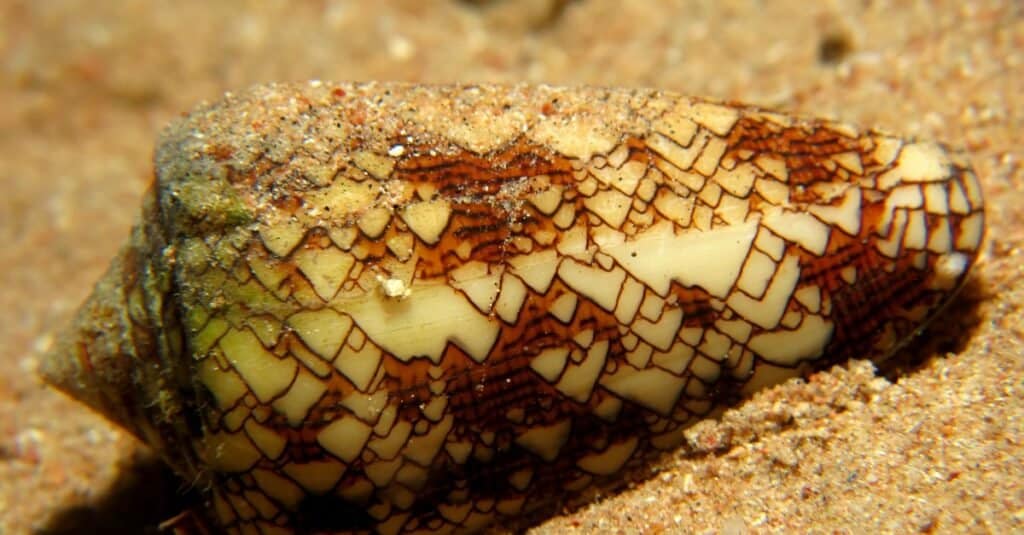
There are snails on land, in the oceans, and in most freshwater environments.
©iStock.com/lilithlita
There are all sorts of snails all over the earth!
When people use the term snail, they are generally are to the land snails that we often find in gardens or in our backyards. They are incredibly common and can be found almost anywhere on earth. The largest land snail is the Giant African land snail which is known to grow up to 8 inches long and 4 inches in diameter – about the size of a human fist. The snails that most people encounter in their backyard is called the brown garden snail. They are famous for their constant trial of mucus that they excrete as they move around.
Aside from land snails are sea snails. Sea snails are incredibly common and live on the seafloor, coastal rocks, and vegetation. Common sea snails examples are whelks, abalones, and cone snails. Cone snails are some of the deadliest animals on the planet, capable of shooting poisonous darts out of their modified radula. Many sea snails eat algae and vegetation, but others are predators (like the cone snail).
Freshwater snails are also common. Often, people know of freshwater snails from their usage in fish tanks and aquariums. They are great cleaners and keep the glass tanks free of algae and debris. Some common freshwater snails are the apple snail and the red-rimmed melania.
Where do snails live?
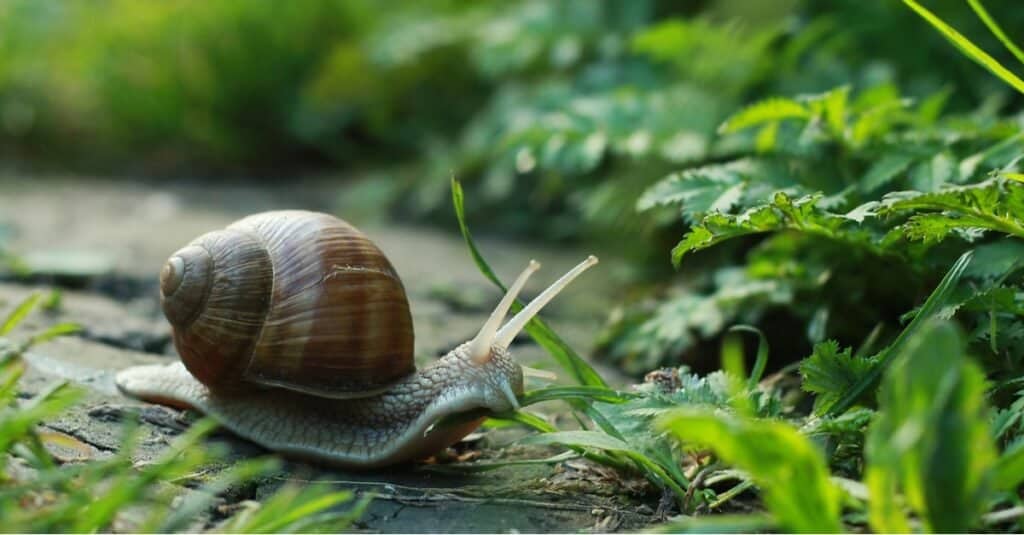
Common garden snails live in moist environments like forests, gardens, fields, and wetlands.
©Zuzha/Shutterstock.com
Snails live in almost every environment on the planet. The species will determine their specific locations, but overall, you can find snails everywhere.
Land snails are found on land (clearly), mostly in moist soils where there is plentiful vegetation and organic matter for them to feed on. Forests, fields, swamps, and wetlands are all places you are likely to find snails. They are common pests that farmers deal with.
Sea snails are found in the world’s oceans. They live in temperate to tropical environments, either among the coastal breaks or on the seafloor. Many species will attach themselves to rocks, creating a defensible position that protects their bodies. They are extremely diverse and come in all shapes, colors, and sizes. Conch shells come from large sea snails and are often used as decoration. Some sea snails are predatory and actively hunt prey. The moon snail and cone snail are common examples. The moon snail bores into clams and shellfish and sucks out the insides while the cone snail shoots poison darts at passing fish.
Freshwater snails can be found in ponds, lakes, rivers, and streams. Additionally, some species have the ability to live in wet environments on land. They eat algae and dead material, acting as cleaners for the environments they live in.
What other animals are related to snails?
Slugs are the closest relative to snails. Although they are not the same animal, they have many of the same characteristics. Snails aren’t slugs with a shell, however. Slugs are gastropods without a shell, while snails are gastropods with a shell. This impacts the environments that they find themselves in since slugs can fit into places that snails can’t, and snails have portable protection from predators.
Zooming out, snails are more closely related to other mollusks than insects! That means that slugs, snails, octopus, scallops, and squid all share taxonomical classification. What’s important to note, however, is that classification doesn’t always mean evolutionary relative. Some species evolve to be similar even though they are half the world apart. A common example of this is the camera-type eye that giant squid and humans share, although our most recent ancestor was around 750 million years ago and was probably a worm!
The photo featured at the top of this post is © Bildagentur Zoonar GmbH/Shutterstock.com
Thank you for reading! Have some feedback for us? Contact the AZ Animals editorial team.




